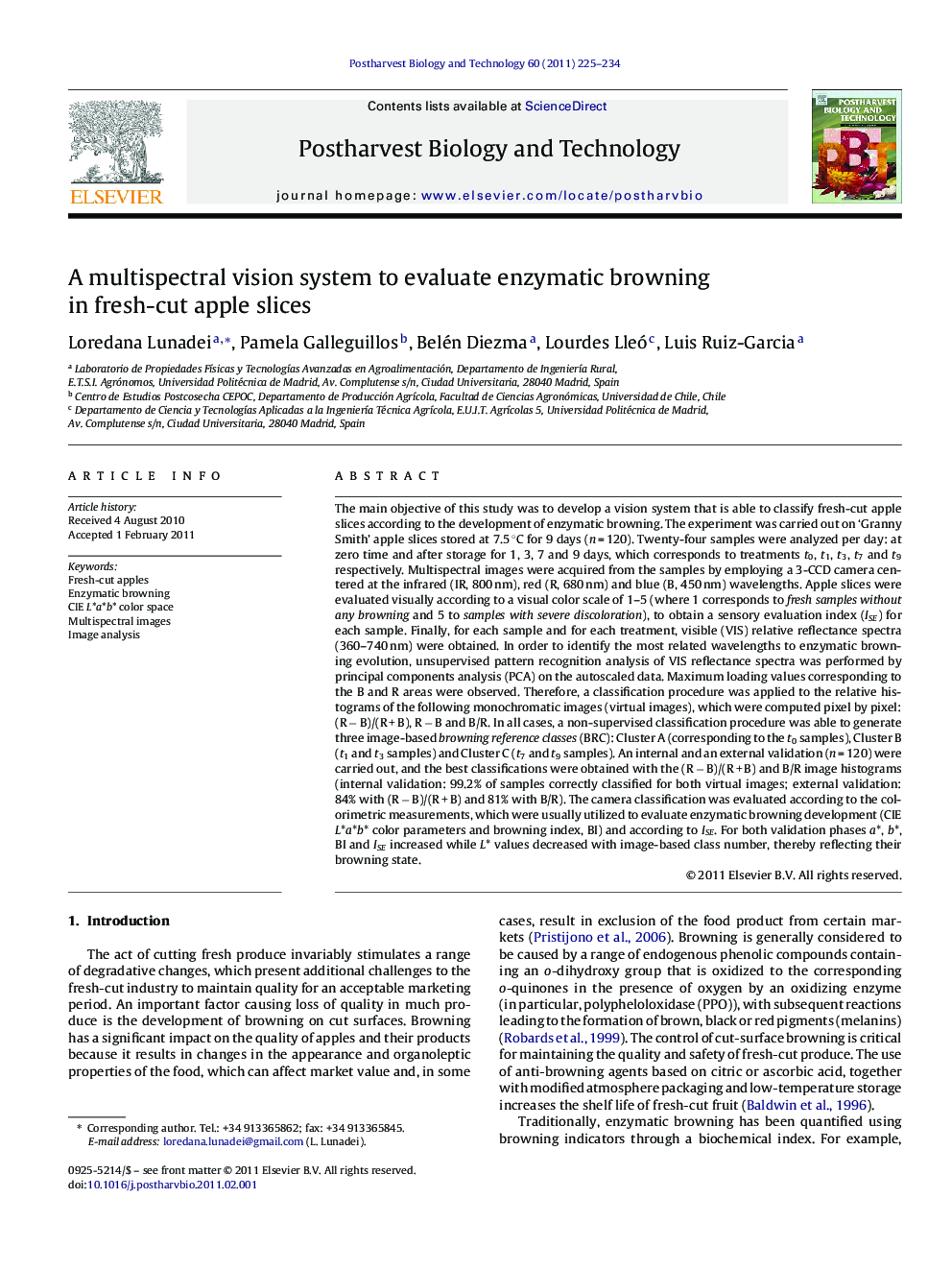| کد مقاله | کد نشریه | سال انتشار | مقاله انگلیسی | نسخه تمام متن |
|---|---|---|---|---|
| 4518776 | 1625031 | 2011 | 10 صفحه PDF | دانلود رایگان |

The main objective of this study was to develop a vision system that is able to classify fresh-cut apple slices according to the development of enzymatic browning. The experiment was carried out on ‘Granny Smith’ apple slices stored at 7.5 °C for 9 days (n = 120). Twenty-four samples were analyzed per day: at zero time and after storage for 1, 3, 7 and 9 days, which corresponds to treatments t0, t1, t3, t7 and t9 respectively. Multispectral images were acquired from the samples by employing a 3-CCD camera centered at the infrared (IR, 800 nm), red (R, 680 nm) and blue (B, 450 nm) wavelengths. Apple slices were evaluated visually according to a visual color scale of 1–5 (where 1 corresponds to fresh samples without any browning and 5 to samples with severe discoloration), to obtain a sensory evaluation index (ISE) for each sample. Finally, for each sample and for each treatment, visible (VIS) relative reflectance spectra (360–740 nm) were obtained. In order to identify the most related wavelengths to enzymatic browning evolution, unsupervised pattern recognition analysis of VIS reflectance spectra was performed by principal components analysis (PCA) on the autoscaled data. Maximum loading values corresponding to the B and R areas were observed. Therefore, a classification procedure was applied to the relative histograms of the following monochromatic images (virtual images), which were computed pixel by pixel: (R − B)/(R + B), R − B and B/R. In all cases, a non-supervised classification procedure was able to generate three image-based browning reference classes (BRC): Cluster A (corresponding to the t0 samples), Cluster B (t1 and t3 samples) and Cluster C (t7 and t9 samples). An internal and an external validation (n = 120) were carried out, and the best classifications were obtained with the (R − B)/(R + B) and B/R image histograms (internal validation: 99.2% of samples correctly classified for both virtual images; external validation: 84% with (R − B)/(R + B) and 81% with B/R). The camera classification was evaluated according to the colorimetric measurements, which were usually utilized to evaluate enzymatic browning development (CIE L*a*b* color parameters and browning index, BI) and according to ISE. For both validation phases a*, b*, BI and ISE increased while L* values decreased with image-based class number, thereby reflecting their browning state.
Research highlights
► Enzymatic browning is an important factor reducing quality in fresh-cut products.
► There is a need of new technology to monitor browning in fresh-cut products.
► Measurements obtained through colorimeters are not so accurate in food products.
► Vision systems allow fast, sensitive and accurate measurements of color.
► Red and blue wavelengths contain enough information to identify browning.
Journal: Postharvest Biology and Technology - Volume 60, Issue 3, June 2011, Pages 225–234